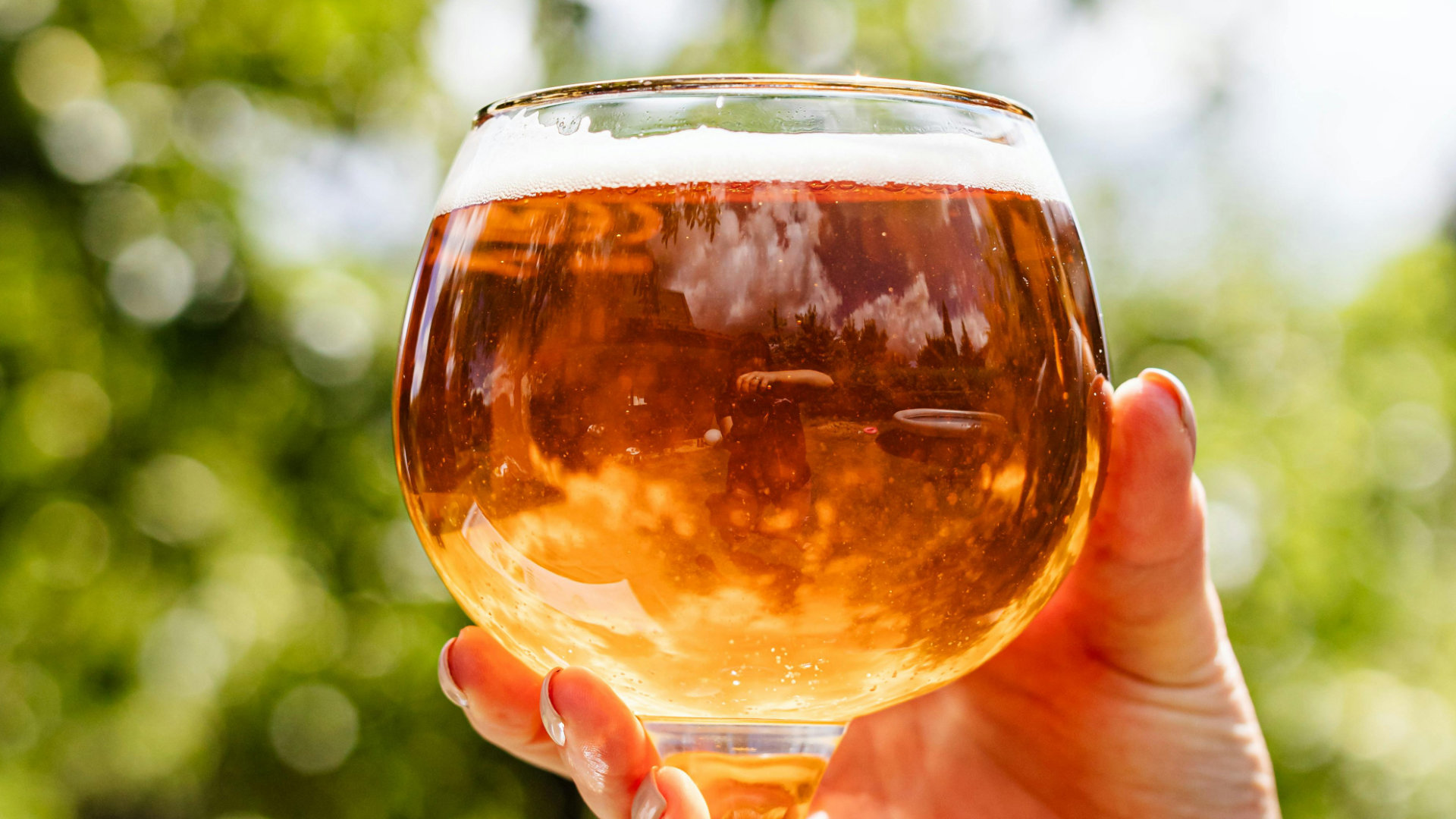Rice may be one of the world’s most ancient grains, but in brewing it’s still revealing new dimensions. Once dismissed as a bland adjunct for mass-market lagers, rice is now enjoying a renaissance among craft brewers who see it not as a filler, but as a tool for precision, texture and subtlety. From jasmine to black rice, puffed to flaked, the diversity of rice offers brewers a palette of possibilities.
The Role of Rice in Brewing
At its core, rice contributes fermentable sugars with minimal protein and oil. This makes it ideal for producing beers with a light body, clean finish and brilliant clarity. It’s often used to:
• Dry out high-ABV styles
• Lighten mouthfeel in hop-forward beers
• Add subtle sweetness or floral notes
• Create gluten-free alternatives
But not all rice is created equal - and how it’s processed matters just as much as the variety.
Types of Rice To Use
1. Long-Grain White Rice: Used in many commercial lagers, long-grain rice lends a crisp, neutral character. It’s low in amylopectin, which helps keep the body light and the finish dry. Ideal for pilsners, cream ales and rice lagers.
2. Jasmine and Basmati Rice: These aromatic varieties bring subtle floral and nutty notes. Jasmine rice, in particular, has proven to be a great choice for IPAs and saisons where its perfume complements hop esters. Best used cooked and cooled before adding to the mash.
3. Short-Grain and Sushi Rice: High in starch and stickiness, these varieties can add body and sweetness. They’re often used in richer styles like porters or experimental ales. Their gelatinisation temperature is lower, making them easier to work with in the mash.
4. Black Rice: This dramatic grain adds a deep purple hue and earthy, umami-rich flavour. Used sparingly, it can transform a stout or dark ale into something truly unique. Toasting enhances its nutty character.
5. Red Rice: Popularised by Japanese brewers like Hitachino Nest, red rice imparts a rosy tint and subtle berry-like notes. It’s often used in speciality ales and hybrid styles.
6. Glutinous (Sticky) Rice: Common in traditional Asian rice beers, this variety creates a thick, opaque body and mild sweetness. It’s less common in Western brewing but ideal for rustic farmhouse styles or gluten-free experiments.
Forms and Preparation
Whole Rice: Must be cooked before use to gelatinise starches. Adds complexity but requires extra prep.
Flaked Rice: Pre-gelatinised and ready to mash. Offers convenience and consistent results. Great for light lagers and pale ales.
Puffed Rice: Adds texture and a subtle toasted note. Can be mashed directly or steeped.
Rice Syrup or Syrup Solids: Used in extract brewing or to boost ABV without adding body. Neutral in flavour and easy to dose.
Rice Hulls: Not fermentable, but essential for lautering when using high percentages of adjuncts. They prevent stuck sparges and improve mash flow.
Tips for Brewing with Rice
• Cook whole rice thoroughly to break down starches before adding to the mash.
• Limit rice to 10–25% of the grain bill unless brewing a rice-forward style.
• Use rice hulls when brewing with sticky or high-protein grains.
• Pair aromatic rice with expressive hops or yeast strains to highlight its character.
Long before barley became the dominant grain in brewing, rice was quietly shaping its own legacy in the world of fermented beverages. From the misty valleys of ancient China to the ceremonial fires of India and the sleek breweries of modern Japan, rice beer has evolved from a sacred ritual drink to global refreshment. Its story is as varied and nuanced as the cultures that brew it.
Archaeological evidence suggests that rice fermentation dates back nearly 10,000 years. At the Shangshan site in Zhejiang Province, China, pottery fragments revealed traces of domesticated rice and fermentation moulds, pointing to one of the earliest known alcoholic beverages in East Asia. These early rice beers weren’t just for casual sipping they were likely used in rituals and communal gatherings, underscoring their cultural significance.
In India, rice beer has deep tribal roots. The Mishing (or Mishmi/Mising) people of Assam and communities across Jharkhand, Odisha and West Bengal have brewed traditional rice beers like Handia and Xaj for centuries. These drinks, often fermented with herbal starters like ranu tablets, are still central to festivals, marriages and ancestral rites.
Sake and Asian Traditions
Japan’s contribution to rice beer is perhaps its most globally recognised: sake. Though technically closer to a rice wine, sake shares fermentation principles with beer and has been brewed for over a thousand years. Using polished rice, koji mould and yeast, sake became a cornerstone of Japanese culture, served in temples, imperial courts, and izakayas (a type of Japanese bar serving small dishes) alike.
In Korea, makgeolli offers a rustic counterpart: a milky, lightly sparkling rice beer with a gentle sweetness and probiotic benefits. In China, Lao-Lao and other regional rice brews continue to be made with sticky rice and wild fermentation, often tied to local customs and seasonal rituals.
Rice in Western Brewing
Rice entered Western brewing in the late 19th century, when German immigrants in the U.S. faced challenges brewing with high-protein six-row barley. To lighten the body and improve clarity, they added rice as an adjunct. This innovation led to the creation of iconic American lagers like Budweiser, which still uses rice to achieve its crisp, clean profile.
Today, rice is a staple in many commercial lagers, not just for cost or clarity, but for its ability to produce a dry, refreshing finish. Craft brewers have embraced rice for its versatility, experimenting with varieties like black rice, jasmine rice, and even puffed rice to create beers with floral, nutty, or earthy undertones. ?
Rice Beers to Try
As gluten-free diets and global palates expand, rice beer is enjoying a renaissance. Brewers are rediscovering rice’s potential, not just as a neutral adjunct, but as a flavourful grain that gives beer a unique character. Hitachino Nest’s Red Rice Ale (7% ABV) from Kiuchi Brewery is a Japanese beer which you can find online in the UK. Brewed with asamurasaki red rice (known as ‘ancient rice’ in Japan, and used to make red sake) this medium-bodied rice ale is sake-like in its complexity, with subtle malt sweetness and hints of strawberries on the nose and palate, finishing with smooth, mildly bitter notes.
Meanwhile, here in the UK, traditional rice beers are being reimagined for modern audiences, bridging ancient techniques with contemporary tastes. ‘Built on a base of both torrefied and basmati rice, we use a classic step-mash technique to stop the rice gelatinising and extract the delicate flavour of basmati’, say the folks at Moonwake Beer Co. on their Saffron Rice Lager (5% ABV). ‘We add the “red gold” of Persian saffron in the whirlpool to yield earthy & floral notes. It’s then fermented extra cold with Nova yeast for a crisp slightly sweet beer with a spicy floral kick.’
Kanpai Japanese Rice Lager (5% ABV) from Bluntrock Brewery in Cornwall is a super light, super dry and super crisp Japanese rice lager. With gentle aromas of gooseberry and lemon, it’s reminiscent of a white wine - delicious!
Rigg & Furrow in Northumberland make an extra special ‘bone dry’ rice lager, Extra Dry (5% ABV), hopped with American Loral® (floral, herbal and peppery notes alongside hints of citrus and dark fruit) and German Callista (a hop delivering notes of stone fruit, red fruit and herbs). The extra light finish comes from having been extra attenuated. ‘The addition of rice creates an extra crisp lager with a delicious dry finish, making it super easy to drink; highly refreshing and wanting another sip’, says the R&F brew team. SALT’s Ascendancy Rice Lager (4% ABV) is also worth a taste. Inspired by the band Trivium’s iconic album, Ascendancy, it’s crisp and refreshing with a light body and a smooth finish. Check them all out!











